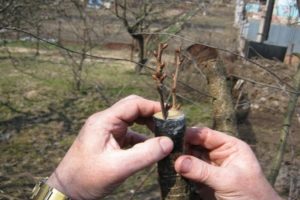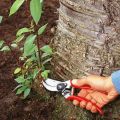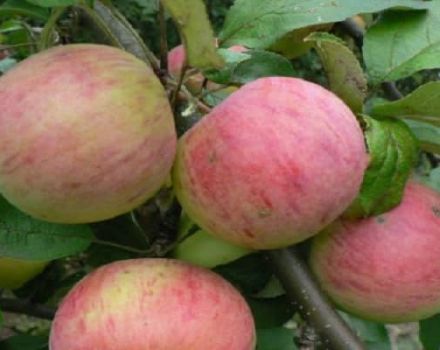How to properly grow cherries in the garden, the choice of seedlings and places, care
Many budding gardeners experience frustrations with the experience planting cherries... Having paid a significant amount for a unique variety, after a while they sadly watch the death of the fruit tree. There can be many reasons for this situation, ranging from an incorrectly chosen place and ending with a violation of the growing rules. To exclude such a development of events, it is important to know how to grow cherries and what rules must be followed.
Correct fit
The rules for planting cherries on the site are largely due to the belonging of the tree to a particular variety. Most often, Russian gardeners choose an ordinary species for these purposes because of the versatility of using its fruits, suitable for fresh food, preparing compotes, jams, juices and sweet products.
For the successful cultivation of cherries, it is necessary to take into account the climate of the region and select a variety whose breeding qualities correspond to its conditions. In areas with a cold climate, only winter-hardy cherry varieties are able to withstand difficult growing conditions.
It is important to determine when to plant your cherries. The recommended time for planting a tree is spring and autumn.
When buying a seedling in the spring, parameters are important, the best is a two-year-old tree stem 60 cm high and 2.5 cm in diameter. Planting is carried out when the soil warms up, and the budding period has not yet begun.
Where to plant cherries:
- the soil must have neutral acidity, be of the sandy type, loamy soil requires drainage;
- lowlands, areas with a damp climate are not suitable, cherry loves lighted, sunny places;
- the groundwater level must be more than 1.5 m;
- the place must be protected from gusty winds.
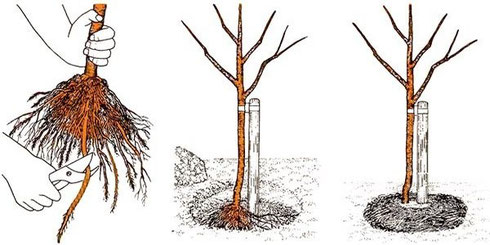
When asked whether and how cherries can be grown in acidic soils, experienced gardeners will answer in the affirmative. Treatment with lime or dolomite flour will allow to lower the indicators and bring them back to normal. 1 m2 400 g of the product is introduced into the soil and digging it to a depth into a shovel bayonet. After that, after a while, organic fertilizers are applied, which are used as compost or manure per 1 m2 15 kg.
The distance should be at least 3 m between cherries. When planting a cross-pollinated variety, it is important to consider the likelihood of pollination. In this case, 4 types of cherries are taken and planted, taking into account the scheme 2.5 x 3 m for tall trees and 2.5 x 2 for undersized trees. Some gardeners prefer to plant trees in a checkerboard pattern.
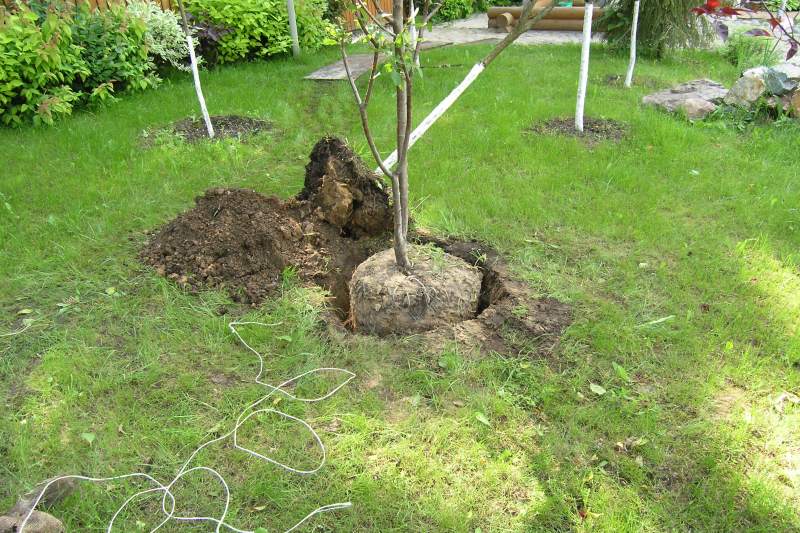
A hole for planting cherries is formed with a diameter of 80 cm, a depth of 50-60 cm. Nitrogen-containing fertilizers and lime are not added to the pit, otherwise the root system can be damaged. It is permissible to add ash, potassium chloride and superphosphate to it.The cherry root system must be healthy, damaged and dried out shoots are removed.
A wooden peg is driven into the center of the recess to facilitate the planting process. The seedling is buried, evenly distributing its root part. The neck should be 4 cm above the soil surface, so that the seedling does not rot in the future. Sprinkle the roots with soil and form a small roller of soil around the tree to better retain moisture. 10 liters of water are poured into the hole, after which the soil is mulched with humus or peat. For better protection, the seedling is provided with an additional support point by carefully tying it to the peg.
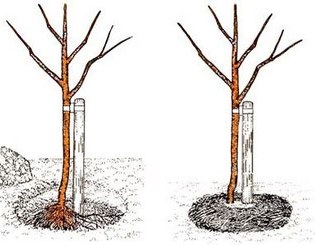
If you purchase a seedling in the fall, you need to dig it in before the onset of spring. The recommended time for work is October, before the threat of frost should be from 20 to 30 days. The following requirements are imposed on the height of the seedling:
- annuals - up to 80 cm;
- biennial - up to 110 cm.
The root system of young shoots must be well formed and the wood must be mature. Before planting, dig a hole with a depth of 40 cm and an inclination of 45... The roots are placed in a depression and watered abundantly. The tree is insulated with spruce twigs, and in winter they are buried with snow. Immediately before planting, the tree is dug up for further rooting in a place of constant cultivation.
Care
Cherries are undemanding to care, the main actions are associated with watering, fertilizing and periodic loosening.
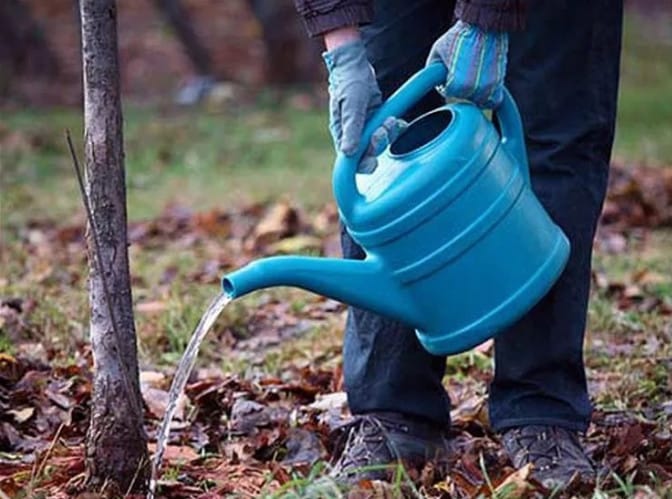
Watering
The first watering is carried out after flowering, which helps the berries to fill with juice. The sufficiency of moisture intake is determined by how much the soil is saturated with water... The optimal depth is from 45 to 55 cm. In the future, the need for irrigation is determined based on the sufficiency of natural precipitation.
Top dressing
It is recommended to apply fertilizers at the moment when the cherry begins to form berries. Their rate depends on the condition of the seedling and its age characteristics. Compost or humus can be used as additives. In the autumn, the soil should be enriched with fertilizers containing phosphorus and potassium. If there is a lack of nitrogen in the soil, the deficit is made up in the spring.
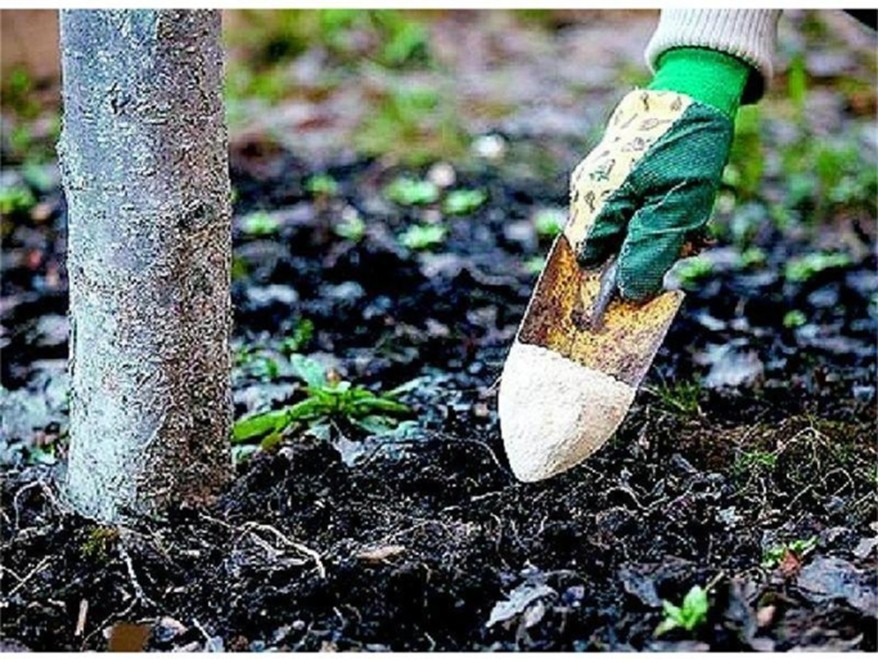
The first top dressing is performed immediately at the end of flowering. The process is repeated after 14 days. For young seedlings, it is enough to add fertilizer to the circle near the trunk. A good effect with increased acidity of the soil produces ash.
Pruning
A distinctive feature of cherries is the rapid increase in the number of branches. As a result, the crown is able to grow and greatly increase in size, the formation of many processes leads to thickening. In the absence of measures to trim the plant, there is a problem of chopping berries and reducing the number of bouquet branches on which fruits are formed. The result is a decrease in yield and a deterioration in the quality of cherries.
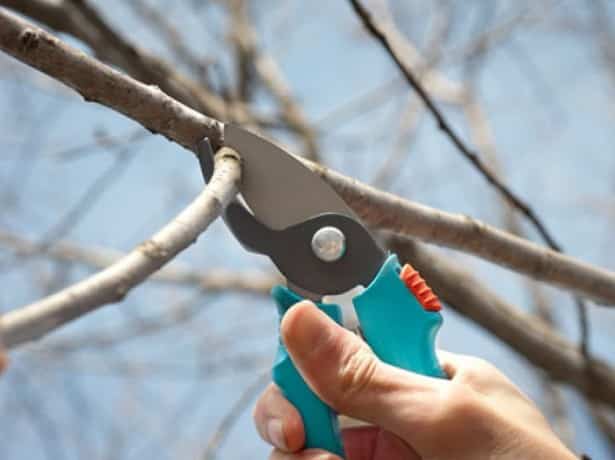
Branches with a shoot length of more than 50 cm are subject to pruning. The procedure is recommended in early spring, 3 weeks before the bud swelling begins. The first work on the formation of the crown is required after planting. With a seedling height of 40 cm, you can begin to form the shape of the crown, while removing unnecessary branches and shoots.
On a tree with a height of slightly more than 40 cm, on average, 7 main branches are left as the basis of the skeleton. The shoots should be evenly spaced, on the lower tier there are enough 3 branches, on the second - 2, on the third - 1. On average, 10 branches should remain during the cherry growing process. All processes that are directed inward must be removed.
For the successful cultivation of cherries, it is important to prevent the spread of overgrowth on the backyard.Excessive growth of young shoots will weaken the plant and can lead to the death of the tree. To exclude this, it is required to cut off the shoots in a timely manner at a distance of 30 cm from the soil surface level. It is effective to dig into the ground at a distance of 1.5 m of a barrier made of slate, plastic or other material that can limit the spread of overgrowth.
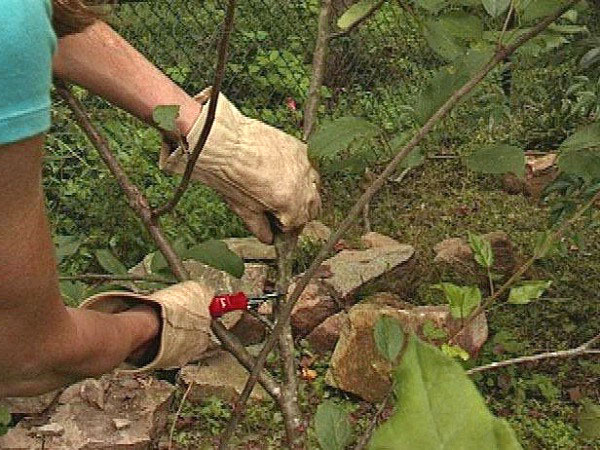
Diseases and pests
In the spring, cherries can be exposed to clotterosporia. The disease manifests itself in the form of the formation of brown spots with a red border on the leaves, which over time can reach a diameter of 2 cm.After 10 days, a hole can be observed in their place. With a large affected area, the leaf plates dry up and fall off.
Formations with clasterosporium can also form on berries, in this case their surface is covered with depressed specks of purple color. At the initial stage, their diameter is 1 mm, but in the absence of timely measures, they can increase by 4 times. To combat fungal diseases, spraying with a 1% solution of copper sulfate is used, dissolving 100 g of the product in 10 liters of water.
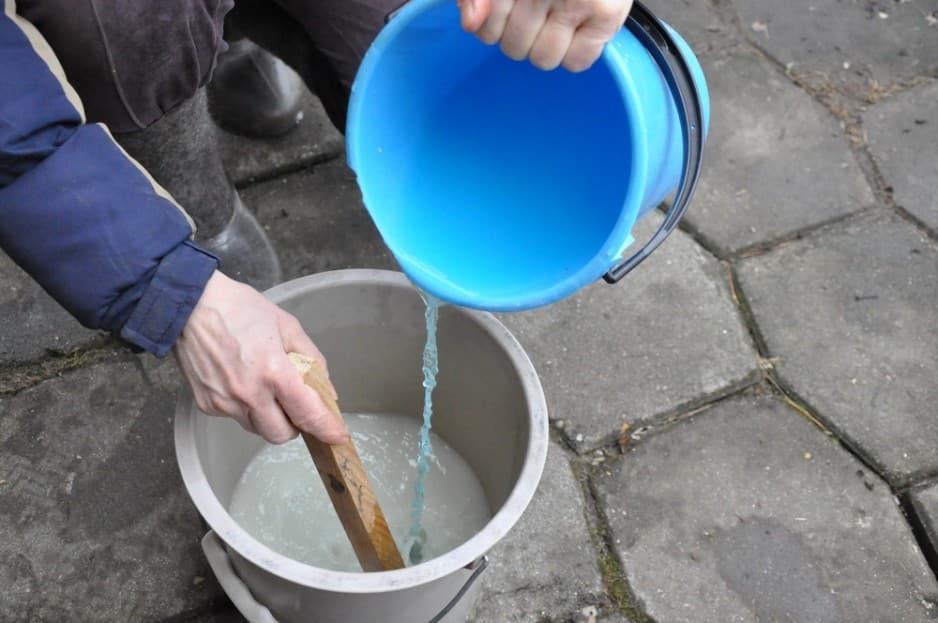
Treatment in order to prevent the appearance of clasterosporiosis is recommended to be carried out in early spring, when the buds have not yet begun to bloom. If the plant is sick, then spraying with Bordeaux liquid is used, diluting 100 g of the drug in 10 liters of water.
It is recommended to do 4 procedures:
- until flowering or at the stage of bud formation;
- after the end of flowering;
- 2 weeks after the 2nd spraying;
- 30 days before the planned harvest.
Cherries can develop coccomycosis, which manifests itself as the formation of red dots on the leaves. As it develops, the plates become yellow, dry out and fall off ahead of time. The danger is that fungal spores are capable of spreading over long distances and in a short time infecting large areas of planting. To combat, spraying with a solution of vitriol is used, preparing it from 100 g of the product and 10 liters of water, the procedure is carried out until the beginning of flowering. For the same purposes, you can use the drug "Horus", observing the rules for the preparation and use of the working solution.
Among the most common cherry diseases include:
- scab;
- rust;
- moniliosis.
Among the most common cherry pests includes aphids, ticks, leafworms. Directional drugs are used to combat diseases and pests. As a means of prevention, tree trunks are whitewashed in spring, and foliage and affected tree branches are burned in autumn.

